How & When to Plant Green Beans: Tips, Tricks, & FAQ
-
Samantha Reed
- Last updated:
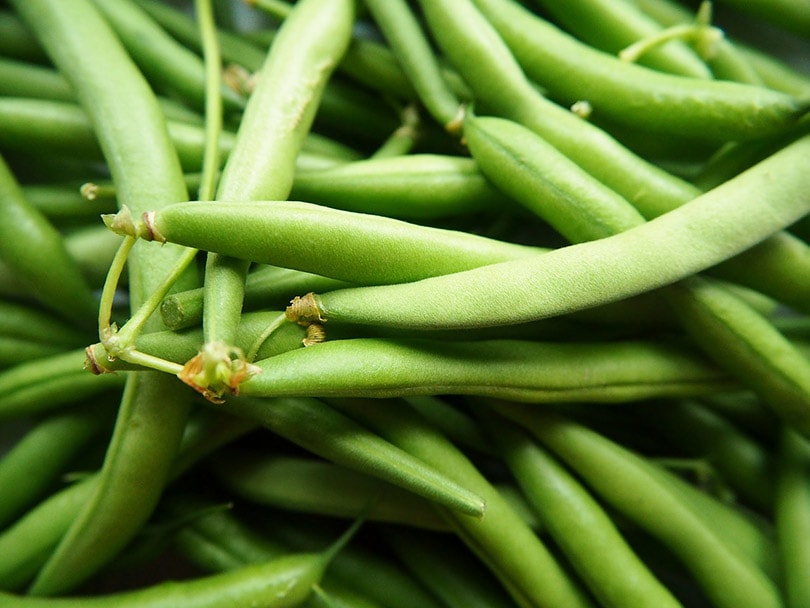
Green beans, string beans, snap beans—whatever you may call them—are easy to grow and a delight to eat fresh from the garden or cooked into a meal. Green beans are a staple in every garden because they are simple to grow, even in a limited space! If you are thinking of growing green beans in your garden, read more below!
What Are Green Beans?
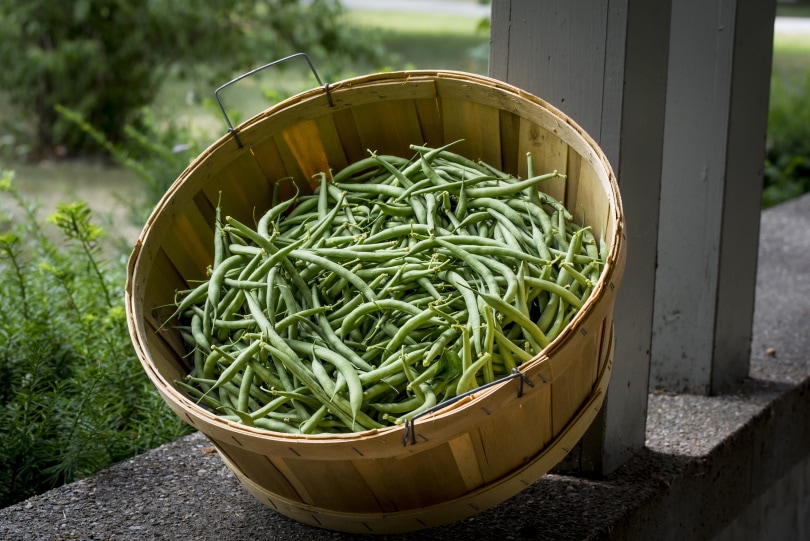
All forms of green beans, both the bush bean and pole bean variety, are tender annuals—meaning they thrive in warm soil and warm air temperatures. Although they may be called green beans, they also come in purple, yellow, red, and even streaked varieties. Green beans, unlike shelling beans (lima beans, black beans, etc.), are eaten whole. Green beans are also a common favorite of canners because a summer crop can be stored and enjoyed for months.
How Are Bush Beans and Pole Beans Different?
While they have different names, bush beans, and pole beans are simply green beans. The difference comes from their growing styles.,
Bush Beans
Bush beans are compact. They grow in a small area, about 2 feet tall, and do not require extra support (like a trellis) for growth. Bush beans typically require less overall maintenance and produce beans in 50 to 55 days. In addition, bush beans often develop all at once, so you’ll want to stagger your planting every two weeks to get an even, continuous harvest.
Pole Beans

Pole beans grow as climbing vines, meaning they need a surface to attach to so they can grow upwards. Pole beans can grow from 10 to 15 feet tall and will keep growing and producing until killed by frost or heat. They take around 55 to 60 days to harvest and will continue to grow as long as you keep harvesting. Pole beans typically produce more green beans than bush beans and are generally more resistant to diseases.
Soil Preparation
Before you consider planting your green beans, you need to ensure your soil is ready to go. Green beans grow the best in soil that drains well, with an acidic to neutral pH (about 6.0 – 7.0). Green beans don’t need extra fertilizer in the soil because they create nitrogen—hence their low maintenance reputation. Green beans are a warm-weather crop, and the ideal time to plant them is after the danger of frost has passed. You will want to ensure all weeds and trash are removed from the planting area. If you are growing pole beans, you need to build a trellis before planting. Beans don’t grow well when their roots are disturbed, so set up your supports before planting.
How to Plant Green Beans – 4 Tips & Tricks
While bush beans and pole beans grow and produce beans differently, both types need the same conditions to thrive.
1. Check the Temperature
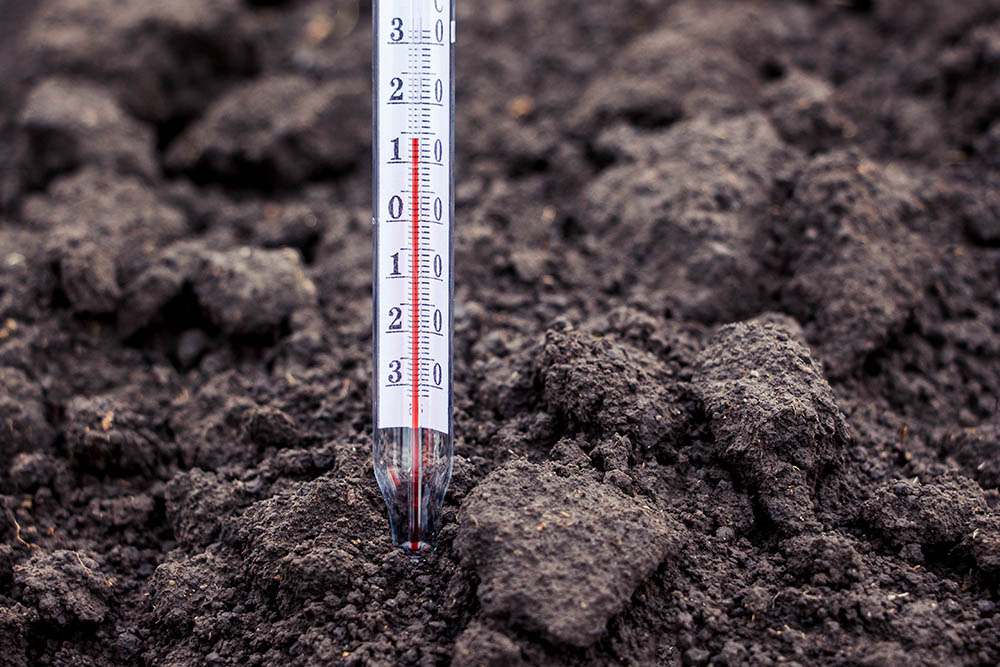
Green beans grow best in slightly warmer temperatures. Ensure your soil temperature is around 50 to 60 degrees Fahrenheit for your green beans. Maintaining the proper soil temperature will reduce the chances of slow germination or rot.
2. Support Your Pole Beans
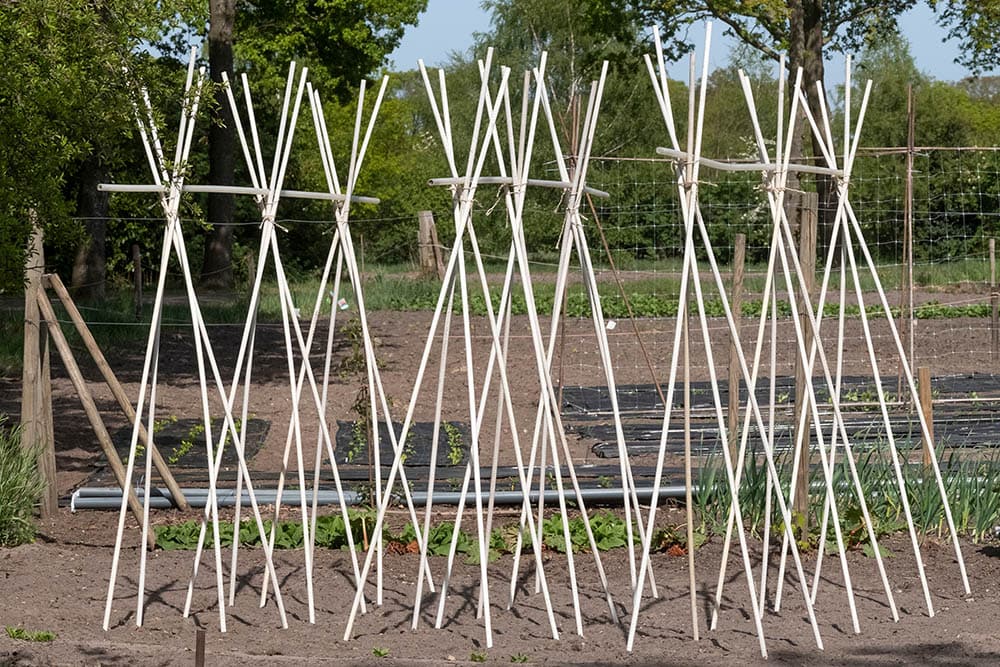
If you are planting pole beans, you need to install supports prior to planting.
One popular method of support is the tepee. For the teepee method, gather three or four (or more) long branches or wooden poles. Then, tie them together at the top and spread the bottomof the pole in a circle. As your seedlings become vines, you can wind them up the poles, so they continue growing throughout the season.
You can also use a cattle panel for support. This is a portable section of a wire fence that you wind the beans through. The wire fence should be about 16 feet wide and 5 feet tall. The beans will climb the fence without difficulty.
3. Sow Seeds Directly

You should plant the beans directly into the soil rather than beginning in another container and transplanting them. Beans have very fragile roots, making them prone to breaking during transplanting. If you are planting bush beans, sow them 1 inch deep and about 2 inches apart in rows around 18 inches apart from each other. If planting pole beans, you will want to plant them 1 inch deep surrounding their supports. Seedlings cannot push upwards through soil that is too deep, heavy, or densely packed.
4. Provide Enough Space
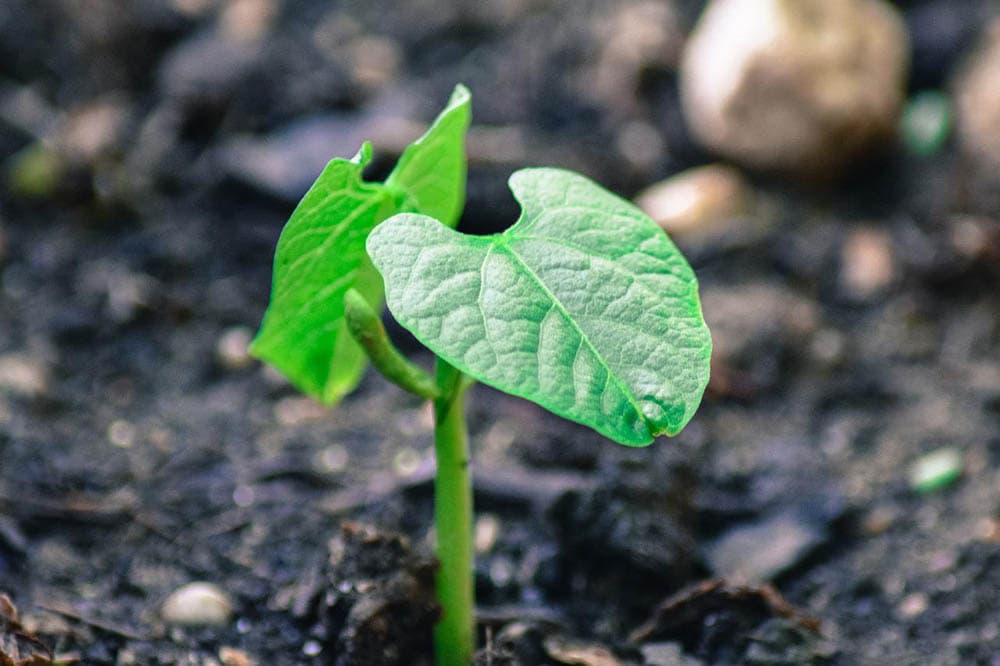
If planting bush seeds, they should be about 3 inches apart, and your rows, as we stated earlier, should be 18 inches apart. If you are using pole beans, plant three to four seeds around each pole in your supports. These will be 4 to 8 inches apart, and the supports should be in rows that are 2 to 3 feet apart.
Grow Green Bean Growing Tips
Green beans are easy to grow because they only require light maintenance and care to thrive and grow.
- Mulch the soil around your bean plants so that it retains moisture but ensure that it is well-drained. Beans have shallow and fragile roots, and mulch keeps them cool.
- Water regularly. If you do not provide your beans with enough water, they will stop flowering and growing. Your beans need about 2 inches of water per week.
- Provide sunlight to your plants. Green beans need around 6 to 8 hours of full sunlight per day. If you live in a hot location, make sure you protect your beans from the heat. High heat can cause blossoms to fall from your plants.
- Sow more beans for a continuous harvest. Try to plant new beans every two weeks to ensure an abundant harvest. If you planted pole beans, you should pinch off the tops of the vines when they reach the top of the support. This encourages the vines to spend more energy producing new pods rather than continuing upwards.
How to Harvest Green Beans

Your green beans will be ready for their first harvest around 50 to 60 days after you planted them. Bean pods are ready to be harvested when they are 4 to 6 inches long, slightly firm, and the beans are barely protruding from the skin. Green beans should be harvested when they’re young before the seeds inside have fully developed. You should cut the beans off the plant while being careful not to tear the plant itself. Fresh beans should easily snap when broken off the vine.
Pick your green beans every day. The more beans you pick off the vine, the more beans will grow.
Green Beans Don’t Need Green Thumbs
Green beans are perfect for people who have never grown vegetables. You have nothing to lose by popping green bean seeds into the ground and watching them sprout. Even if you think you have a “brown thumb,” green beans are the perfect crop to test your skills.
- https://www.smalls.com/human-grade-fresh?clickid=Q7HSJPV1RxyIWoIRoMR6PzagUkD0Ux3R3WVTzI0&irgwc=1&utm_source=affiliate&utm_medium=impact&utm_term=Pangolia_2295087_mediapartner&utm_content=Online%20Tracking%20Link_511473_ONLINE_TRACKING_LINK&utm_campaign=8746
- https://www.almanac.com/plant/beans
- https://joegardener.com/how-do-i-grow-green-beans/
- https://www.masterclass.com/articles/how-to-grow-green-beans#how-to-plant-green-beans
Featured Image Credit: flockine, Pixabay
Contents
